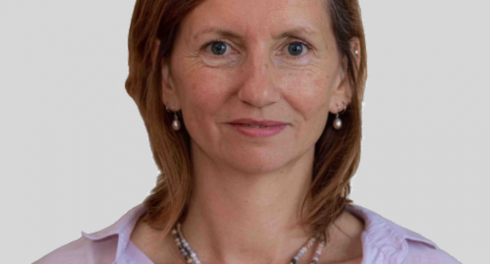
I stared blankly at the wall in my one-room in Seoul. One-room is a loan-word Koreans used to describe a small, spartan living space, suited for students like me. Here I was, in an apartment cramped enough to warrant a special name, applying for an internship in the early hours of the morning more suited to bar hopping than interviewing, thirteen-time zones ahead of the place I would work.
Richard Christel, my interviewer and later supervisor-mentor asked me what I knew about the Transparency and Accountability Initiative (TAI). I told him the usual, that is, what I read and understood from the website. He then asked me what I knew about donor collaboratives. Excellent. The one question I hardly knew the answer to. I gave him the theoretical definition and asked him for clarification. Of course, words can only convey so much. The insider perspective is necessary to really appreciate the value (and frustrations) of supporting donors to align efforts. After working at TAI, I have a much better understanding of both.
At TAI, one task was to research member grantee programs. My purpose was to find similarities between member grantees and provide context to the programs that I was researching. These were all subordinate to the greater mission of enabling collective impact and collaboration between TAI members to other TAI members, and member grantees to other member grantees. The work required a contextual understanding of what TAI members and member grantees valued, their working methods, and their funding priorities. I had to learn in short order what my more experienced compatriots learned with years of dedicated work.
One challenge was finding similarities between Luminate’s and Open Society Foundations’ (OSF) efforts in data rights, a subject that is both of professional and personal interest to me. So, I proceeded to research each TAI member and their member grantees.
Luminate’s efforts span over three areas: open data, privacy, and artificial intelligence (AI). Geographically, Luminate’s reach includes Africa, Latin America, Eastern Europe, Western Europe, and Southeast Asia. In their own words, Luminate recognizes that data and their use “are reflections of power,” which gives certain people power over others. To this end, Luminate has invested in Ranking Digital Rights (RDR) and European Digital Rights (EDRi).
RDR aligns with Luminate’s goals by ranking the digital rights accountability of 24 leading technology companies. Using a human rights-based approach, RDR provides the public, investors, potential employees, and advocacy groups, with pertinent information on the values and practices of these companies. EDRi, on the other hand, is a network of human rights organizations in Europe that use policy advocacy, campaigns, and collaboration to pursue its goals of “transparency, human rights, and the rule of law” in the area of digital rights. These investments are only a fraction of Luminate’s efforts to advance digital rights. Learn more on Luminate’s grants database.
Open Society Foundations’ (OSF) efforts fall broadly under their information and digital rights area, which is conducted by their Information Program, Human Rights Initiative, and the Open Society Justice Initiative. Their geographic focuses include Eastern Europe, Western Europe, Latin America, and the United States. OSF seeks to “strengthen freedom of expression, privacy, access to information and anti-discrimination in the digital environment,” which are worthy goals in an increasingly data-driven world. To pursue these goals, OSF has invested in EU DisinfoLab while working on their own publications on digital rights.
EU DisinfoLab ensures that the public has access to information that is neither false, distorted, or denied by mis- or disinformation. Most recently, it has worked on addressing mis- and disinformation during the COVID-19 pandemic on social media platforms. OSF itself has published a manifesto on “human-centric” digital transformation in Europe. The intent behind both these efforts, investment into EU DisinfoLab and the publication of a manifesto, is to re-orient digital transformation to serve the public interest rather than the interests of a powerful few. Have a look at the OSF grants database if you would like to learn about more of their efforts.
We have two TAI members whose approaches to digital rights differ, but pursue similar interests, which is often the case. We can observe how Luminate’s investment in EDRi to use advocacy, campaigns, and collaboration for digital rights in Europe coincide with OSF’s investment into EU DisinfoLab to ensure greater access to information in the same geographic area. Of course, this is not to simplify the individual efforts of TAI members as naturally complementary to one another, as there are important differences, but to illustrate how interests do align, and occasionally, so do approaches.
From my days at TAI, my theoretical understanding of a donor collaborative became practical knowledge. I knew what the work entailed, I knew how to research. I now recognized the Foundations sector not as NGOs jostling independently towards self-centred goals, but as an ecosystem where organizations can have complementary interests and approaches. Finding the information can be challenging, especially when searching for common stakeholders or specific practices between members. More personally, I realized how issues like data rights are controversial precisely because they are contested by parties that each wants to shape the world to satisfy their own interests.
For example, a data rights debate in the context of COVID-19, a public health problem, is whether to eschew privacy for contact tracing. The latter has enabled South Korea to flatten the curve rapidly, but neglecting the former could result in a weakening of privacy overall. In this case, who is right? The people that want to flatten the curve rapidly in the present, or the people who want to preserve privacy in the future? In this context, between two well-articulated interests, the difference between one outcome and another is often a hair’s breadth. Data rights, like any cause, depends as much on sustained campaigns as it does on dramatic results.
My experience at TAI taught me two things. First, that the Foundations sector is interconnected, that goals and approaches can align. Second, that for any cause to succeed, including data rights, there must be a driven movement behind that cause. After my internship at TAI, I have a greater knowledge of the philanthropic sector and of social reform, and a new interest in combining both into a career when I graduate.
Michael Hariman was a student fellow at the Transparency and Accountability Initiative. He is a junior at American University, where he majors in International Studies and Economics, B.S.


